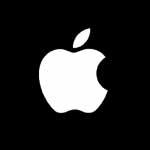Soom feel that Aperture could be iPhoto plus a Camera Raw plug-in. David Blatner, a graphics arts consultant and author, wondered if Aperture would be more a competitor to Adobe Bridge, a file management application that grew out of the file browser in Adobe's Creative Suite and is included in Creative Suite 2.
Apple Aperture is aimed at the professional photographer who shoots predominantly Raw files and is looking for a better way to manage their workflow and perform their initial Raw conversion. After installing Aperture, you might find yourself dragging iView MediaPro or Extensis Portfolio to the Trash, and your Raw workflow will definitely change, but Adobe Photoshop will stay firmly ensconced in your Applications folder.
However, though Aperture will provide adjustment tools such as Histogram to modify color and white balance, Apple seemed to suggest that most content editing of photos should remain Photoshop's province. In its product information, Apple wrote that Aperture will feature "seamless Photoshop integration." This will include one-click file export to Photoshop, native support for flattened or single-layer .PSD files and management of Photoshop-generated image versions.
Apple Computer today introduced Aperture, a digital-image-editing software targeted at professional photographers by simplifying the workflow issues many professionals have encountered over the years. The Aperture software appears to be a complete rethinking of the user interface for digital-image-editing software, giving users the option of seeing their photographs laid out like slides or negatives on a light table.
 Like most of Apple's software, Aperture will only work on the company's Macintosh computers. As with all Apple products, Aperture aims to feel intuitive and easy to navigate. It's designed to help organize and manage photo workflow, while allowing for reversible image retouching and manipulation. It also allows photographers to work directly from more sophisticated data rather than having to use the more common compressed Jpeg format.
Like most of Apple's software, Aperture will only work on the company's Macintosh computers. As with all Apple products, Aperture aims to feel intuitive and easy to navigate. It's designed to help organize and manage photo workflow, while allowing for reversible image retouching and manipulation. It also allows photographers to work directly from more sophisticated data rather than having to use the more common compressed Jpeg format.Apple's Aperture might be one of the most innovative and important pieces of digital photography software to come around in a long time. It's hard not to get all mouth-watery from watching Apple's demo movies because the program appears to include excellent solutions to common digital photography workflow problems. But while it's easy to get excited by the wow and flash of Apple's demos, it's important to remember that good Raw workflow involves much more than just good organization tools.
In the late 1990s, Adobe's Premiere program dominated the market for Mac video-editing programs. But Apple's Final Cut program, which the computer company introduced in 1999, changed all that. Apple had taken away such a significant chunk of Adobe's business on the Mac that by 2002, Adobe stopped making Premiere for Apple computers.
Unlike customers of office suites or operating systems, professionals who buy imaging or graphics software often purchase more than one program for a particular task, even if the features of the programs overlap. So Apple may be able to find a place on customers' desktops for Aperture even if the program doesn't displace Photoshop.
One of Aperture's chief selling points is its support for RAW files. And Adobe believes that has led to the perception among some users that Apple is targeting Photoshop with its new program. Adobe also believes that Aperture underscores the desire of professional photographers to have better workflow tools.
Source: MacNN | Publish | Aperture: Raw Deal or the Real Thing?